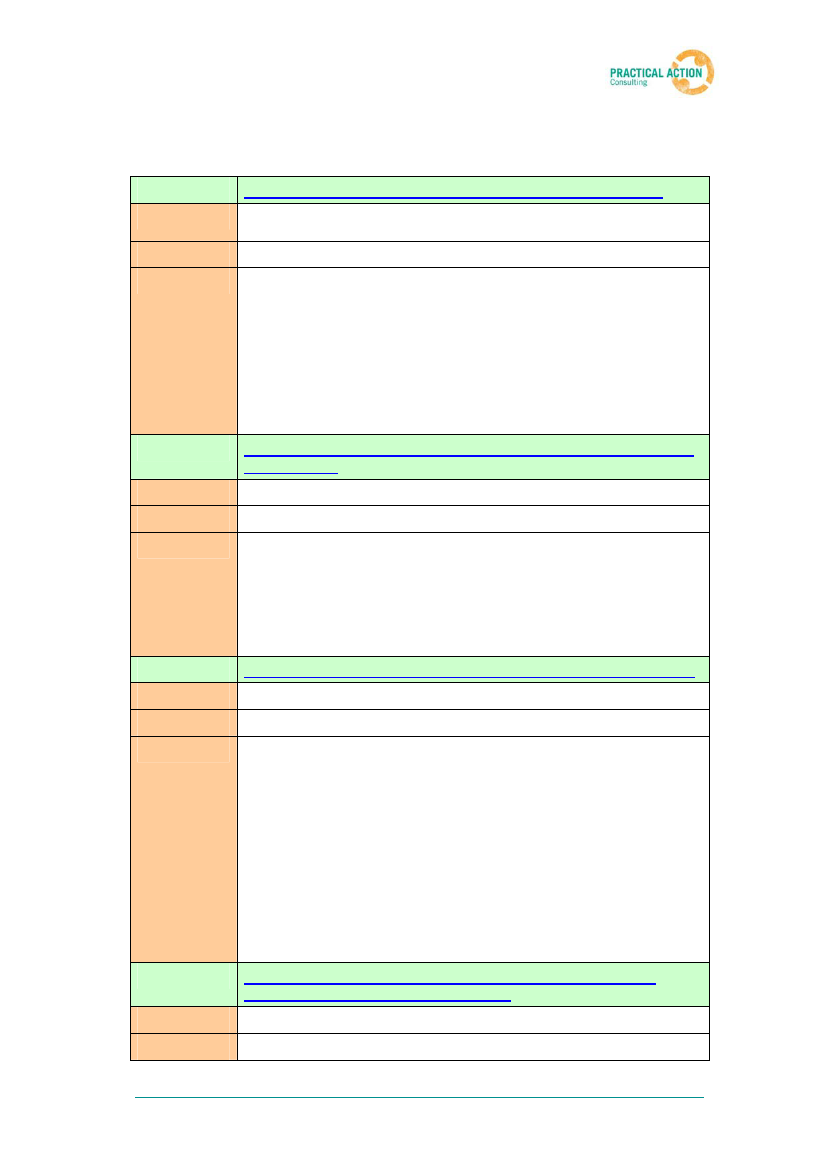
A number of M&E Toolkits have been produced specifically for energy projects in
developing countries:
Table 10: Monitoring and Evaluation toolkits
Title
Toolkit
Focus
Description
Title
Toolkit
Focus
Description
Title
Toolkit
Focus
Description
Title
Toolkit
Focus
A Guide to Monitoring and Evaluation for Energy Projects
Monitoring and Evaluation in Energy for Development (M&EED) International
Working Group
Energy access projects. M&E design at early project stage
This Guide proposes a step by step approach to building project-specific
monitoring and evaluation procedures. The Guide also includes thematic modules
from electrification from different sources, improved cook stoves and institutional
support. They are based on an input-output-outcome-impact approach, with each
module looking over the four aspects in sequence. It looks at the relevant
indicators and the units where applicable, and point out a certain number of
problems or particularities of each observable. The modules simply propose a
common framework on which evaluations may be constructed. The guide is
intended for projects for which the M&E method has not already been determined
by a project donor or stakeholder. The guide was developed by the M&EED
Group, as a contribution to the progress of energy access projects.
Monitoring and Evaluation of the Impact of Renewable Energy
Programmes
Renewable Energy and Energy Efficiency Partnership
RE projects. M&E design at early project stage
This toolkit describes how to listen to users, take account of their opinions and
make them active players in the installation and delivery of renewable energy
systems. The approach intends to help practitioners and donors to forge strong
'partnerships' with users rather than let them remain only as 'recipients'. The
content of the toolkit is not technology specific. It provides a clarification of
participation in monitoring and evaluation processes, design of an M&E system,
and the usage of participatory tools and methods. The toolkit addresses, in
particular, how social equity can be included in the M&E process.
Monitoring & Evaluation: Some Tools, Methods & Approaches
The World Bank
Generic. Tools, methods & approaches for M&E
An overview of a sample of M&E tools, methods, and approaches, including their
purpose and use; advantages and disadvantages; costs, skills, and time required;
and key references. The document discusses:
• Performance indicators
• The logical framework approach
• Theory-based evaluation
• Formal surveys
• Rapid appraisal methods
• Participatory methods
• Public expenditure tracking surveys
• Impact evaluation
• Cost-benefit and cost-effectiveness analysis
Measuring successes and Setbacks. How to Monitor and
Evaluate Household Energy Projects
GTZ. HERA Household Energy Programme
Household Energy (particularly ICS). M&E planning and implementation
Renewable Energy to Reduce Poverty in Africa
36